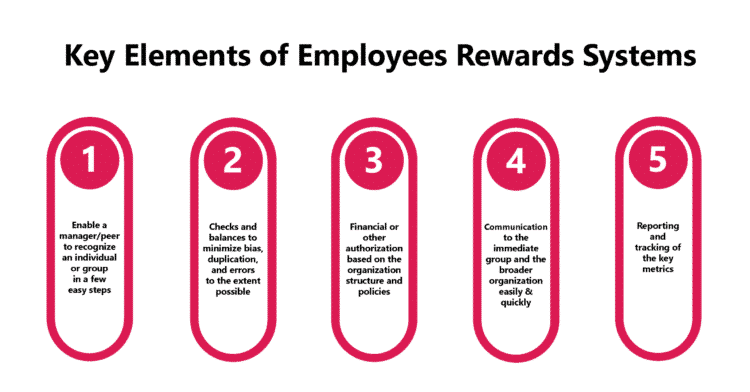1. Employee recognition should be timely and meaningful: Properly executed recognition from managers or peers can significantly boost employee motivation and contribute to a positive work culture.
2. Implement systems with checks and balances: Recognition systems should be easy to use, minimize bias and errors, and ensure proper authorization and communication. They should also track key metrics without making recognition feel like an entitlement.
3. Balance the art and science of recognition: While systems and processes are essential, recognition’s genuine expression, timeliness, and honesty matter greatly in creating its true impact.
4. Create a culture of appreciation: Recognition should foster a culture where employees feel valued beyond just performance metrics, enhancing engagement and promoting a positive organizational atmosphere.
Employee recognition may or may not come with monetary benefits, but it often comes with high organizational visibility.

Employee recognition has come a long way and has evolved into a more structured form of appreciation within the organization; not just restricted to leaders or managers but any employee in the organization could recognize anyone.
Though peer-to-peer recognition is a noble idea, management has expressed pessimism about whether it is genuine.
Several organizations have downgraded the value of peer-to-peer recognition to well below manager recognition due to this reason.

Whatever the mechanism of employee recognition, we believe it should be timely and well thought through. If done correctly, it can multiply employee motivation.
Hence, systems and processes need to be implemented to ensure that the impact of it is fully realized by the organization.
That is when the magic of employee recognition will touch the work lives of all employees and create a great work culture.

1. Enable a manager (or peer) to recognize an individual or group in a few easy steps
2. Checks and balances to minimize bias, duplication, and errors to the extent possible
3. Financial or other authorization based on the organization’s structure and policies
4. Communication with the immediate group and the broader organization easily and quickly
5. Reporting and tracking of the key metrics
Key metrics include coverage ratios at various levels. Organizations usually set a target coverage ratio for themselves.
Though setting a target puts more focus into the whole process it might also make recognition for the sake of recognition which devalues the entire concept.
Hence, we recommend setting a target range for employee recognition, purposely keeping it on the lower side to preserve its novelty and value rather than making it an entitlement.

All this is just the science of employee recognition, driven by systems, processes, and hard numbers.
However, the art of employee recognition goes beyond that—what is said and written, the honesty with which the communication is done, and its timeliness all matter.
Systems and processes can only facilitate it, but it is up to the individual manager or employee to create that magic!
According to us, employee recognition is both an art and a science that helps build a culture of appreciation within the organization.
This will ensure that employees think and act beyond their goal sheets and appraisals and create a positive atmosphere within the organization.
Hence, what is required is the magic of employee recognition that should permeate through the entire organization between one appraisal cycle and the other.

Lead author: Sagar Chaudhuri, the Co-Founder and CEO of HiFives. He is an HR Tech Evangelist with over 25 years of corporate and entrepreneurship experience. In the past, Sagar has worked in leadership roles with companies such as Genpact, Infosys, and ICICI Bank. He has an engineering degree from IIT Kharagpur and an MBA from IIM Lucknow. Connect on LinkedIn
To stay updated on the latest HiFives blogs, follow us on Twitter (@MyHiFives)